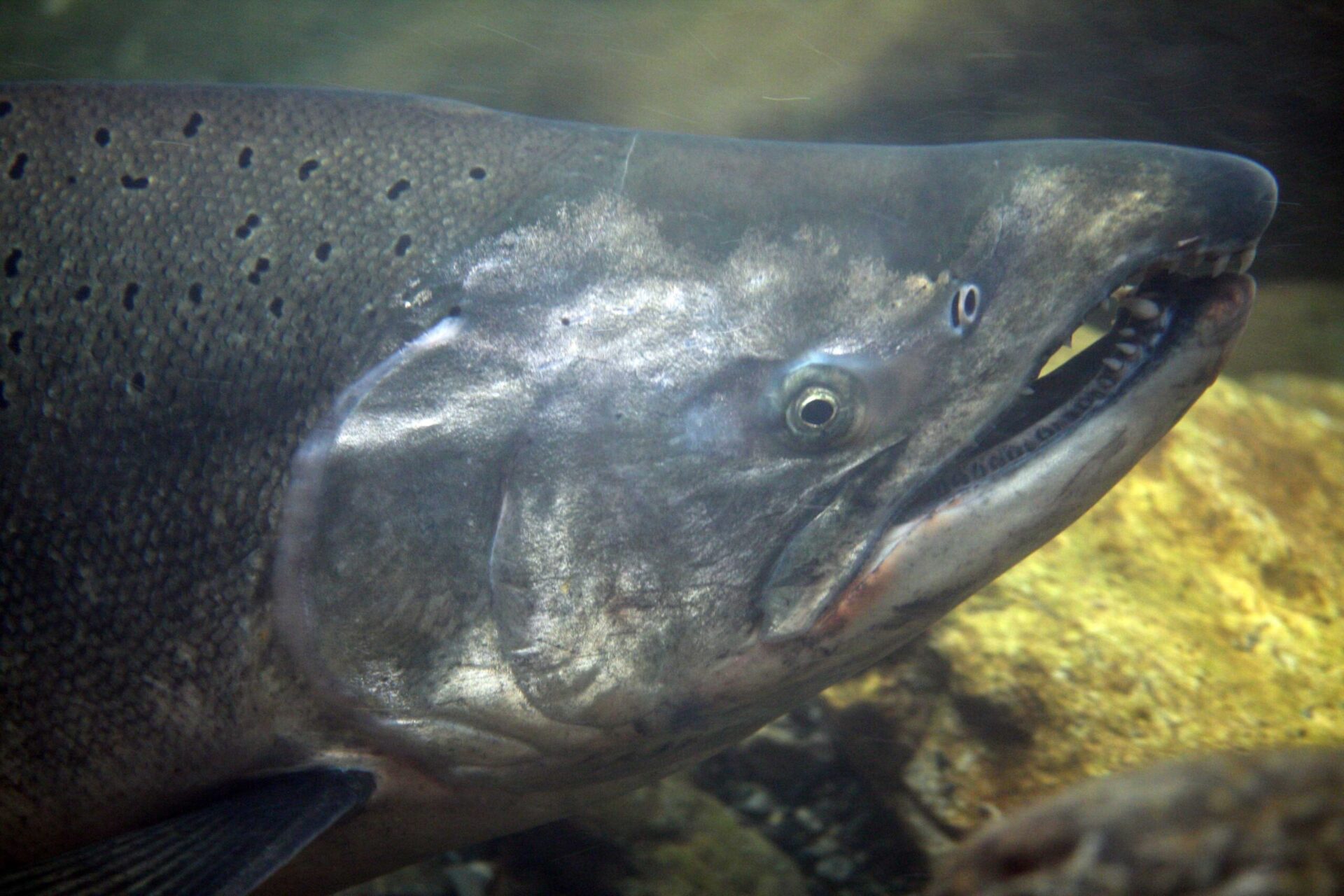Army Corps Under Fire for Evading Responsibility for Dam Impacts on Salmon
 Two new studies of impacts of Yuba River dams reverse Corps’ previous findings
Two new studies of impacts of Yuba River dams reverse Corps’ previous findings
Nevada City, CA – River conservation groups are condemning the U.S. Army Corps of Engineers over two recent environmental documents that ignore the Corps’ responsibility for the dams’ impacts on the Yuba’s endangered and threatened fish species, including Chinook salmon, steelhead trout and green sturgeon.
Last week, the Corps released two Biological Assessments (BAs) regarding the Corps ongoing operation and maintenance of Englebright and Daguerre Point Dams on the Yuba River. However, the Corps now asserts that the only activities they have discretion over are cleaning portable toilets and maintaining the campgrounds and boat ramps. Operating and maintaining the 260-ft Englebright dam is omitted entirely. These assessments reverse the position the Corps held for more than a decade that the dams are part of the Army Corps’ Yuba River “project” – a regulatory definition meaning the dams must be operated to protect endangered and threatened species.
The South Yuba River Citizens League (SYRCL), Friends of the River and American Rivers expressed deep concern that the Army Corps’ exclusion of Englebright Dam’s impacts on the listed fish species is an attempt to prevent the National Marine Fisheries Services (NMFS) from requiring any protections for threatened fish in NMFS’s subsequent biological opinion due in May 2014. Federal fish biologists have found that salmon are in jeopardy of extinction due mainly to the fact that the dams block the fish from migrating upstream to adequate spawning habitat.
“These Biological Assessments represent a shocking reversal of the Corps’ position on its own dams. Sadly, they indicate that the Corps is ready to abdicate its responsibility under the Endangered Species Act,” said Caleb Dardick, SYRCL’s Executive Director. “The idea that the 260-foot-high Englebright Dam doesn’t affect the river and its fish is absurd on its face,” Dardick added.
“Basically, the Corps is saying that Englebright’s adverse impacts on threatened fish species have never been its concern. The Corps would have us believe that its only responsibilities are emptying the trash cans, cleaning up the occasional oil spill and pumping out porta-potties at Englebright reservoir campground,” said Bob Center, Executive Director of Friends of the River.
“It appears the Corps took advantage of the recent government shut down to purge itself of institutional memory, moral fortitude and its duty to protect the public trust related to the Yuba River. The Corps was required by a 1935 federal law to provide fish passage over Englebright if feasible. With this move, they are trying to take one more step away from their legal duty,” said Steve Rothert, Director of American Rivers’ California Regional Office.
The Corps’ two Biological Assessments are the latest developments in a complicated legal and regulatory saga going back more than a decade.
SYRCL sued the Corps of Engineers in federal court in 2000 to compel it to consult with the National Marine Fisheries Service (NMFS) about the impacts the Corps’ dams were having on threatened Yuba River fish species. (Under the Endangered Species Act all federal agencies must consult with the appropriate fish or wildlife agency if a federal project may affect endangered species in the area.) Since that time NMFS has issued four formal decisions, called Biological Opinions, which have analyzed the impacts caused by the Corps’ dams.
Environmentalists scored a major victory in February 2012, when NMFS released a Biological Opinion, finding that Englebright and Daguerre were jeopardizing the continued existence of three species of anadromous fish. That Biological Opinion concluded that the Corps of Engineers should take a number of actions to reduce the harm being caused to the threatened species, including implementing a program to provide fish passage past the dams by 2020, removing predatory fish at Daguerre Point Dam, adding large woody material and spawning gravel below Englebright Dam, and restoring habitat through removal of rock debris left over from the construction of the dam more than 70 years ago.
Although the Corps has complained of lack of funding or authority to implement some of the measures in past biological opinions, it never completely abandoned any attempt at complying with them until now.
Spring-run Chinook salmon were once plentiful in the Central Valley, with over 600,000 returning to their natal streams each year. But the construction of impassable dams in the 20th Century reduced the habitat available to the species by 80%, resulting in substantial population declines. In 2011, fewer than 5,000 spring Chinook returned to the Central Valley, a reduction of over 99% from historical levels. Removing barriers to upstream fish passage is urgently needed to halt this continuing slide toward extinction.
SYRCL, Friends of the River and American Rivers lead a coalition of community and environmental groups to improve conditions on the Yuba River and advocate for improved operation of the dams to increase fish populations and restore them to their ancestral spawning grounds.
For more information and a copy of the Biological assessments and other documents, please visit www.yubasalmonnow.org on the resource page.
Contacts:
Caleb Dardick, Executive Director, SYRCL
(530) 265-5961 x207; Caleb@syrcl.org
Christopher Sproul, Lead Attorney, Environmental Advocates
(415) 533-3376; csproul@enviroadvocates.com
Bob Center, Executive Director, Friends of the River
(916) 442-3155 x212; bcenter@friendsoftheriver.org
Steve Rothert, California Director of American Rivers
(530) 277-0448; srothert@americanrivers.org
Did you enjoy this post?
Get new SYRCL articles delivered to your inbox by subscribing to our ENews.


